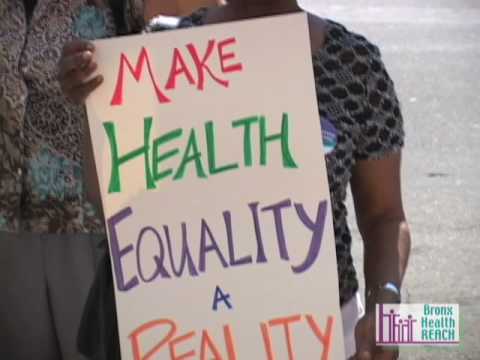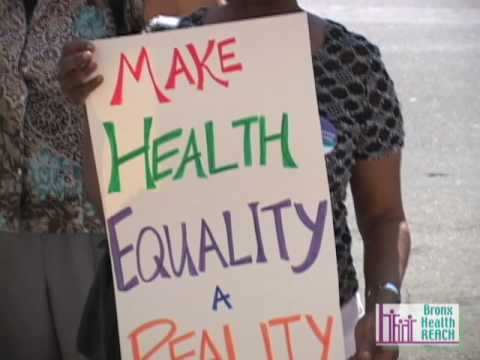
This post is written by CHMP Senior Fellow, Charmaine Ruddock. Ms. Ruddock joined the Institute for Family Health formerly known as The Institute for Urban Family Health in 2000 to direct Bronx Health REACH, a coalition of 50 community and faith-based organizations, funded by the Centers for Disease Control’s REACH 2010 Initiative to address racial and ethnic health disparities.
In an open letter from President Obama addressed to African American families in the November 2012 issue of Ebony magazine, the President begins thus, “ As a young man , I got my first start working with a group of churches on the South Side of Chicago, helping families who had no place to turn when the local steel plants shut down. I worked with local leaders to rebuild neighborhoods, improve schools and, most of all, to broaden opportunities for people who felt like it was slipping away.” In reading this I was reminded of the fact that time and time again it is the churches in so many hard hit communities that are the mainstay of those communities. They stock and staff the food pantries that feed the hungry. They educate the children of the poor or at least supplement the diabolically inferior education provided by many of the local public schools (read any of Jonathan Kozol’s seminal works such as Savage Inequalities to get a first-hand description). They rehabilitate neighborhoods that more look like the bombed out neighborhoods of Beirut than cities which are part of the greatest city in the world – New York. It is ironic that it was the churches in New York through such efforts as the Nehemiah low cost housing program that kept many of those neighborhoods now being transformed by gentrification sufficiently intact to be now so desirable that they are the site of a feeding frenzy by vulture real estate developers. Many of these same vulture developers had bought buildings and boarded them up for decades, not caring how much it decimated the lives and real estate value of those who couldn’t flee and who clung to their American dream of home ownership. And, it was churches that operated the front lines in the battles against the scourge of crack/cocaine in those neighborhoods.
The church as an engine of change or, at least, a bulwark against the bleak social and economic forces that attempt to disembowel many of our neighborhoods is one we know well in Bronx Health REACH. Within our community coalition we have a group of 47 churches of different denominations and sizes. It is these churches that have been the mainstay of our efforts as we grapple with 18% of south Bronx residents diagnosed with diabetes. Many more are at risk for diabetes with the obesity prevalence rate at 31%. Bronx Health REACH is founded on the partnerships that its parent organization, the Institute for Family Health, built with churches (as well as other community based organizations) to establish health centers in the south Bronx at a time when Medicaid Mills were the main access to health care ( I use ‘healthcare’ very, very loosely here).
Over the last decade, church leaders working with Bronx Health REACH have sought to embed health ministries in their churches. They have either incorporated these ministries into such existing ministries as their men’s ministry, women’s ministry, youth ministry, nurses’ ministry, or have created new ministries with a singular focus on health. A few weeks ago in San Francisco at the annual American Public Health Association (APHA) conference we presented on some of our faith based initiatives that have had demonstrable impact on some of the bleak statistics I cited earlier.
During the past year we have had visitors from the University of New Mexico, the UK and even from the Netherlands who wanted to come hear and see for themselves the work that the churches are doing in community health development. They have explicitly remarked on the leadership role of the churches not only in the work they are doing in their respective congregations but in strongly advocating for systemic changes, most notably in ending segregated care based on health insurance status in academic medical institutions.
When the day arrives that the Bronx Health REACH slogan, “Making Health Equality a Reality’ is a fact of life it will in no small part be because of the movement that the churches in the Bronx led, and because they taught and fought to hold on to the promise of possibilities even when everything seems to point to away from that. Their faith will have made us whole.
Charmaine Ruddock










Pingback: Churches- still a beacon of hope as communities undergo changes … | Church Ministry / November 27, 2012
/
kenyabeard / November 29, 2012
Thank God for churches!! and yes I agree they are a mainstay – oftentimes they are the only institution that shines as a beacon of hope in the midst of communities facing sorrow and despair
/